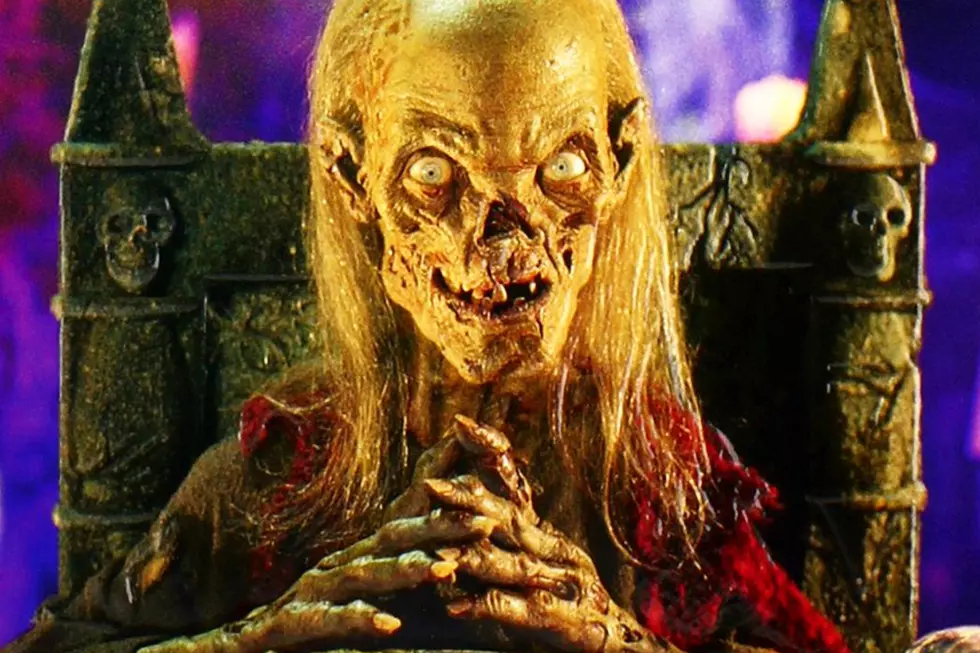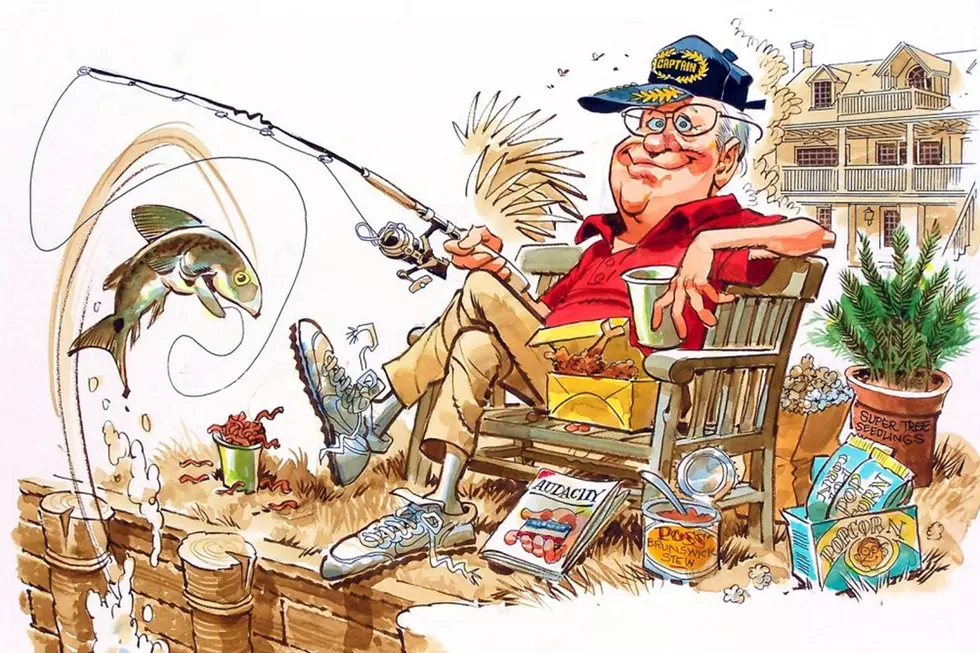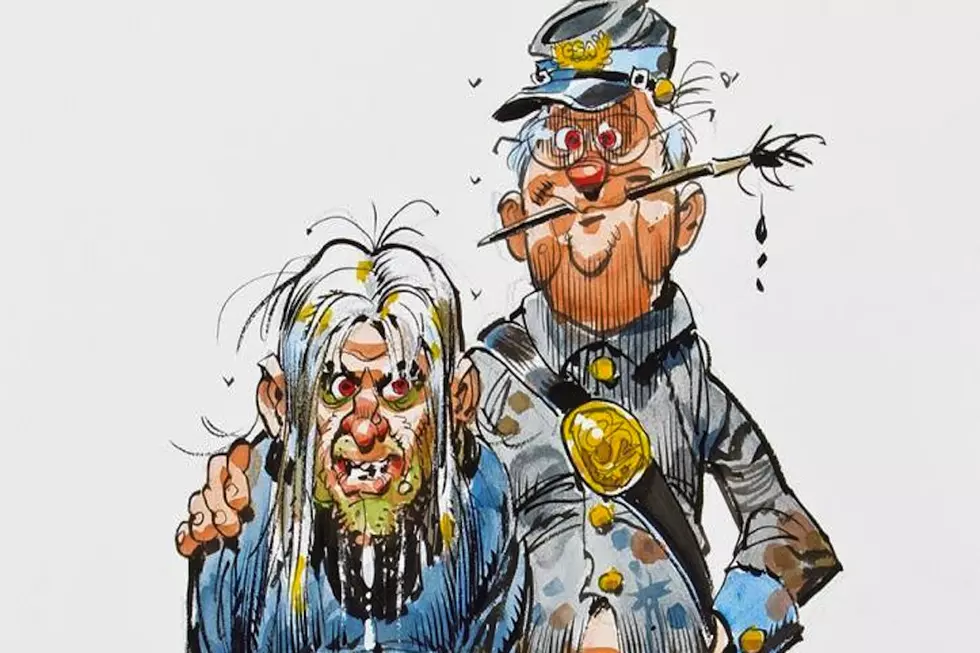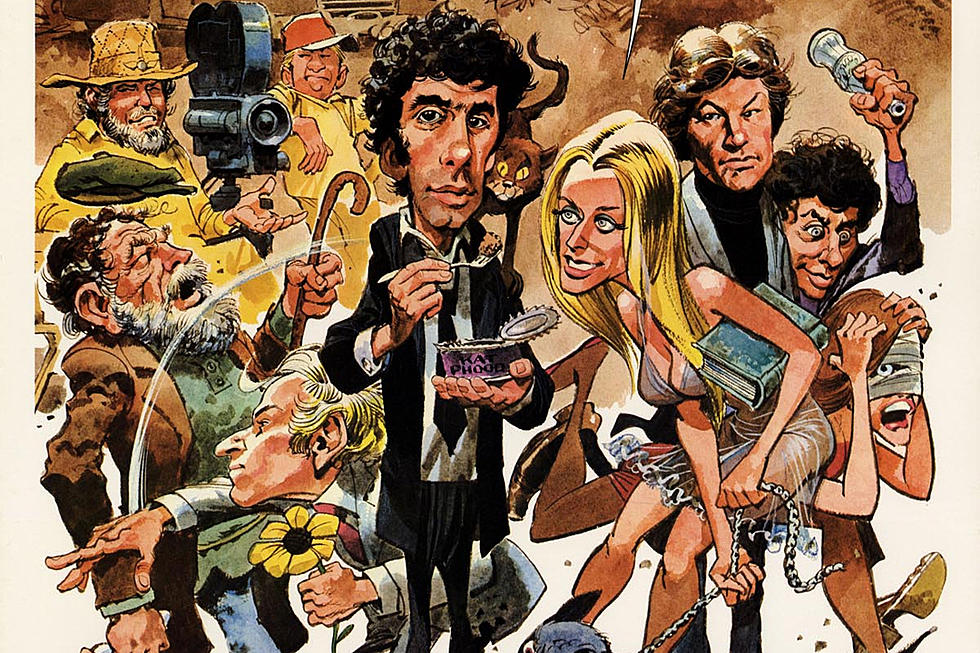
Today In Comics History: Bill Gaines Fights The Good Fight
On April 21 1954, William M. "Bill" Gaines, publisher of Entertaining Comics, spoke at the Senate Subcommittee on Juvenile Delinquency to defend his comic books against accusations of indecency and the perversion of minors. Some say as a direct result of his testimony, comic books were irreparably damaged. But no matter the result, Bill Gaines should be applauded simply for being willing to stand up and be counted.
Just two days after the publication of Dr. Fredric Wertham's Seduction of the Innocent, Bill Gaines stepped before Senator Estes Kefauver --- the man who humiliated renowned mobster Frank Costello on national television --- and the rest of the Senate Subcommittee on Juvenile Delinquency voluntarily. He was not called as a witness or asked to defend his publications, even though EC's "New Trend" crime and horror comics were the primary targets. He requested to testify, volunteered to fight, and he came out swinging.
Some may not like them. That is a matter of personal taste. It would be just as difficult to explain the harmless thrill of a horror story to a Dr. Wertham as it would be to explain the sublimity of love to a frigid old maid."
In his testimony, Gaines make several salient points about the nature of entertainment, its effect on children, and the true meanings of stories that were being, as he saw it, unjustly villified. Just before Gaines took to the microphone, Wertham made his presentation, specifically pointing out the use of racist epithets in a story that clearly made an anti-racist statement, "The Whipping" from Shock SuspenStories #14. Gaines appropriately punished his ignorance.
This is one of a series of stories designed to show the evils of race prejudice and mob violence, in this case against Mexican Catholics. Previous stories in this same magazine have dealt with antisemitism, and anti-Negro feelings, evils of dope addiction and development of juvenile delinquents.
This is one of the most brilliantly written stories that I have ever had the pleasure to publish. I was very proud of it, and to find it being used in such a nefarious way made me quite angry.
I am sure Dr. Wertham can read, and he must have read the story, to have counted what he said he counted."
In the early rounds, Gaines landed blow after blow, countering one psychological professional's opinion with another's, pointing out the ubiquity of shocking information being readily available in the news, and the slippery slope of censorship and its place in Communist dictatorships, which surely rankled the fiercely patriotic members of the Subcommittee. He was intelligent and prepared, and he should have been; this was a fight he had been training for.
Many of Gaines's peers thought that he was making a mistake by speaking before the subcommittee; that he should keep his mouth shut. And maybe they were right: it's entirely possible that if Gaines hadn't provided so much fuel for the media, the whole issue of comic books and juvenile delinquency would have blown over.
But such an outcome seems incredibly unlikely, given the growing furor. Unlike many of his contemporaries, Gaines understood that comic book publishers and creators were embroiled in an escalating culture war that had begun years before. As early as 1940, Sterling North's editorial "A National Disgrace" decried the comic books; Time magazine ran a piece entitled "Are Comic Books Fascist?"; mass comic book burnings were held in several spots around the country.
Anti-comic book hysteria had been growing steadily for over a decade, and by the early fifties it had reached its zenith. The industry had to fight for survival, and Gaines seemed the only one willing to step into the ring.
But after his early success, Gaines began to wear down. Reportedly, he was taking Benzedrine, an amphetamine that was prescribed for everything from weight loss to narcolepsy to the daily demands of the American working man. With his testimony occurring later than originally scheduled, Gaines had apparently miscalculated when to take his dose, and as the questioning went on, he lost energy and focus. The pivotal exchange centered around Johnny Craig's infamous cover for Crime SuspenStories #22.
Mr. Beaser: There would be no limit actually to what you put in the magazines?
Mr. Gaines: Only within the bounds of good taste.
Mr. Beaser: Your own good taste and salability?
Mr. Gaines: Yes.
Senator Kefauver: Here is your May 22 issue. This seems to be a man with a bloody axe holding a woman's head up which has been severed from her body. Do you think that is in good taste?
Mr. Gaines: Yes, sir; I do, for the cover of a horror comic. A cover in bad taste, for example, might be defined as holding the head a little higher so that the neck could be seen dripping blood from it and moving the body over a little further so that the neck of the body could be seen to be bloody."
And with that, the fight was effectively over. The subcommittee outmaneuvered the embattled Gaines, boxed him into a corner, and pummeled him. In attacking the shortcomings of the experts, he stepped into his own logical fallacies, agreeing that comic books could promote good behavior but never inspire a child to commit a violent act.
The subcommittee focused on the massive success of EC --- which was selling millions of comics at the time --- and painted Gaines as an unscrupulous businessman who sought only to profit off of salacious material, and by then Gaines had wilted too much to effectively fight back; they questioned him about the pending "Are You A Red Dupe?" which equated comic book censors --- AKA concerned parents --- to Communists.
They wore him down. He came in with a bang and went out with a whimper; deflated, dazed, and thoroughly defeated. The next day, his statements about good taste made the cover of The New York Times, with Craig's gruesome cover as testament that Gaines and his creators were sullying the youth of America. Gaines was crushed.
Within about a year, so was EC. After the formation of the Comics Code Authority, comics with "crime" and "horror" in the title were banned outright; good must always triumph over evil; drug use and racism could not be portrayed, even in a clearly negative light. The home of the most daring and original comics of the era folded, and for a very long time Gaines was made the scapegoat for the sharp decline in the popularity of the medium.
In the end, it worked out for Gaines. He transitioned Mad from a comic book into a magazine --- to help avoid the restrictions of the CCA --- and continued to speak out for freedom of speech, and inspired one generation after another to question authority and stand up for their rights.
On April 21, 1954, Bill Gaines got knocked down hard, but he kept getting up. That's what fighters do.
The 'Bill Gaines Was Right' illustration by Tony Shaheen is available on a t-shirt via the Comic Book Legal Defense Fund.
More From ComicsAlliance









